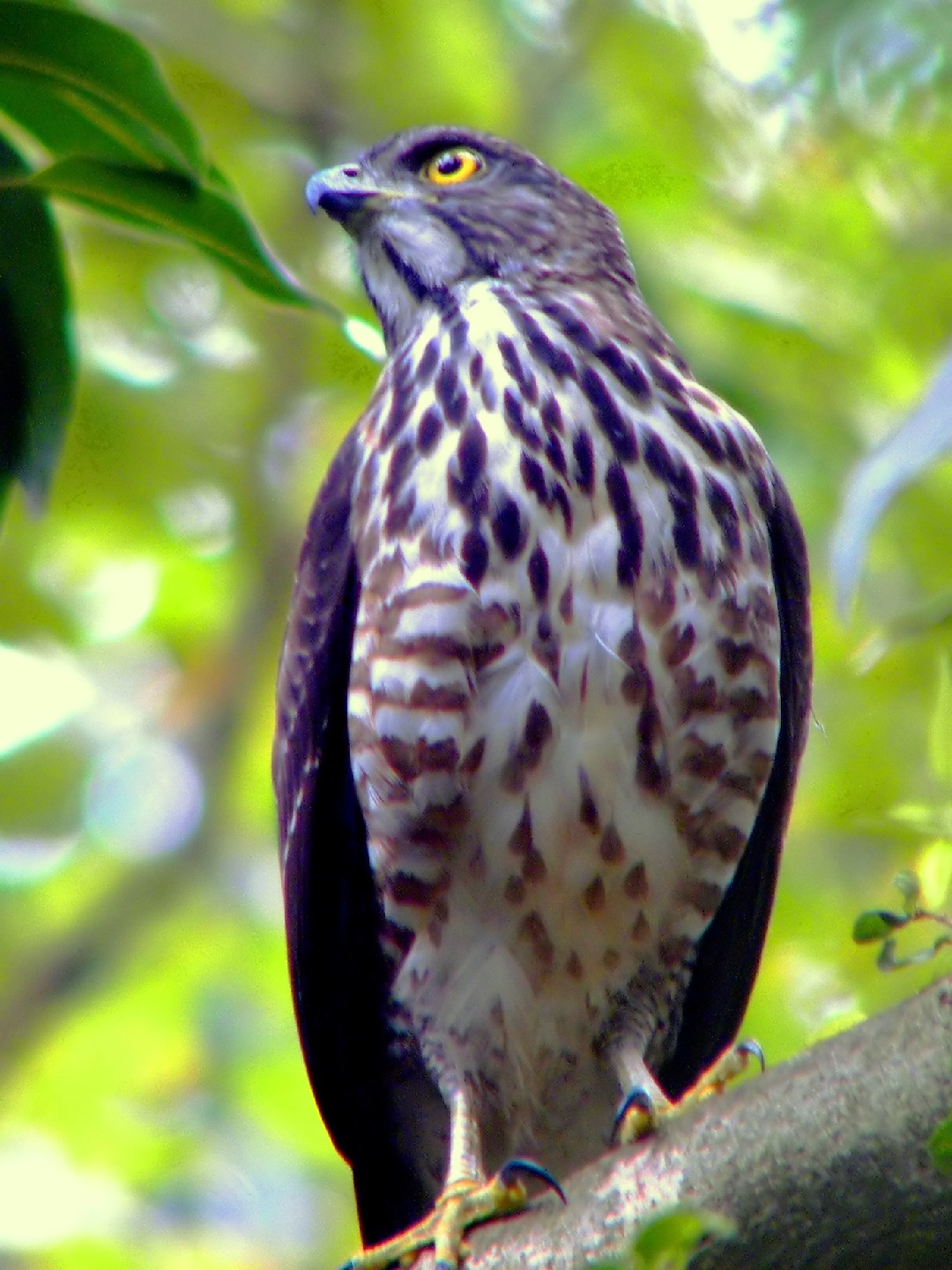Crested Goshawk
A species of Bird Hawks Scientific name : Accipiter trivirgatus Genus : Bird Hawks
Crested Goshawk, A species of Bird Hawks
Botanical name: Accipiter trivirgatus
Genus: Bird Hawks
Content
Description People often ask General Info
 Photo By Charles Lam , used under CC-BY-SA-2.0 /Cropped and compressed from original
Photo By Charles Lam , used under CC-BY-SA-2.0 /Cropped and compressed from original Description
This raptor has short broad wings and a long tail, both adaptations to manoeuvring through trees. It is 30–46 cm in length, with the female much larger than the male. The larger size and a short crest, clearly visible in profile, are the best distinctions from its relative, the besra (A. virgatus). The male has a dark brown crown, grey head sides and black moustachial and throat stripes. The pale underparts are patterned with rufous streaks on the breast and bars on the belly. The larger female has a browner head and brown underpart streaks and bars. The juvenile has pale fringes to its head feathers, and the underpart background colour is buff rather than white. The flight is a characteristic "slow flap, slow flap, straight glide", similar to other Accipiter species such as the northern goshawk (A. gentilis). 
Size
46 cm
Colors
Brown
Black
Gray
White
Nest Placement
Tree
Feeding Habits
Crested Goshawk primarily preys on birds, mammals, and reptiles, using a perch-and-pounce technique. It leverages the element of surprise in dense woodlands to capture its prey.
Habitat
The crested Goshawk resides mainly in tropical and warm subtropical forests, including both deciduous and evergreen habitats. Its range covers diverse landscapes such as lowland humid forests, foothills, and occasionally adapts to life in urban environments. Crested Goshawk thrives in areas with a mix of dense forest and open clearings, often near streams, and it’s known to inhabit forest edges, wooded gardens, and nearby cultivated lands. Traditionally a lowland species, crested Goshawk can be found at elevations from sea level up to 1800 meters, and in some localities, it goes as high as 2400 meters.
Dite type
Carnivorous
People often ask
General Info
Feeding Habits
Bird food type
Species Status
Not globally threatened.